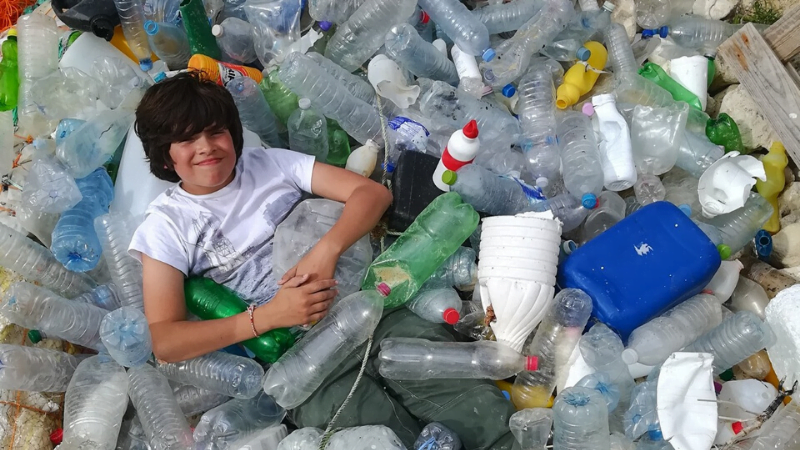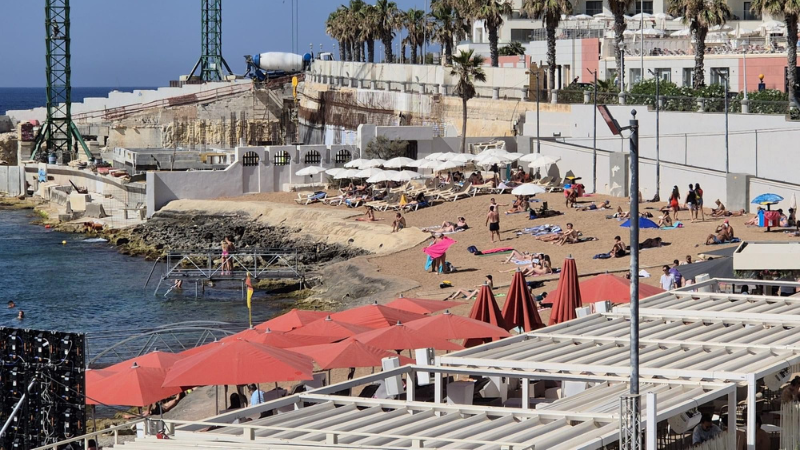More than 1.5 million sheets and bottles of plastic, ropes, stones and other items used for fishing have been abandoned over a span of 50 years in the Mediterranean Sea, creating marine litter that was submerged, beached or left floating in the water, according to a study published in the Journal of Environmental Management.
The research paper looked into the fate of materials referred to as Fishing Aggregating Devices (FAD) used in a method of fishing popular in the Mediterranean – especially among Tunisian, Maltese, Southern Italian and Mallorca fishermen – where plastic sheets are tied together with floats made of plastic bottles (5L), ropes and anchored to boulders.
Out of the four countries, Malta came third for the highest amount of abandoned or lost materials with around 18,508 floats during the whole period together with a “considerable total length of lost cables/ropes, mostly of polyethylene (98,648 km) and of sisal (34,188 km)”.
Between 1961 and 2017, over 1.5 million items were estimated to have been abandoned in the Mediterranean that include a mix of plastic bottles, cork slabs, inner tubes of tyres, and polystyrene slabs (wrapped in plastic sheets), plastic sheets, anchoring ballast (limestone and concrete blocks) and cables/ropes (in polyethylene, sisal or nylon) that reach the sea bed once lost.
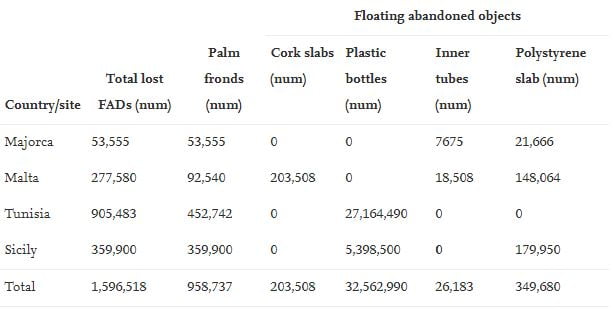
Total number of FADs and palm fronds abandoned per fishing area; number and characteristics of floating objects from 1961 to 2017 in each area.
The highest total number of lost floating devices and abandoned plastic bottles were found around Tunisia, which also had the highest number of anchoring ballasts (905,483). Sicily came in second place and also had the highest number of polystyrene slabs (179,950) and total length of cables/ropes (399,423 km) abandoned in the sea.
Every year, for at least 30 years, about 60,000 of these items were placed at sea and, in most cases, they were not recovered, the report said.
The study, Are FADs a significant source of marine litter? Assessment of released debris and mitigation strategy in the Mediterranean Sea, was co-authored by Mauro Sinopoli, Tiziana Cillari, Franco Andaloro, Claudio Berti, Pierpaolo Consoli, Francois Galgani and Teresa Romeo.
Every year, for at least 30 years, about 60,000 of these items were placed at sea and in most cases were not recovered
The greatest numbers of abandoned plastic sheets (452,742) and concrete blocks (905,483) were estimated to be around Tunisia, while the greatest amount, in terms of length, of polyethylene cable (399,423 km) was estimated to be around Sicily.
About 30% of FADs used all over the world are used in the Mediterranean – the anchored type, which correspond to about 90% of those anchored used worldwide. The legislation on the use of Mediterranean FADs is still poor and does not address environmental issues.
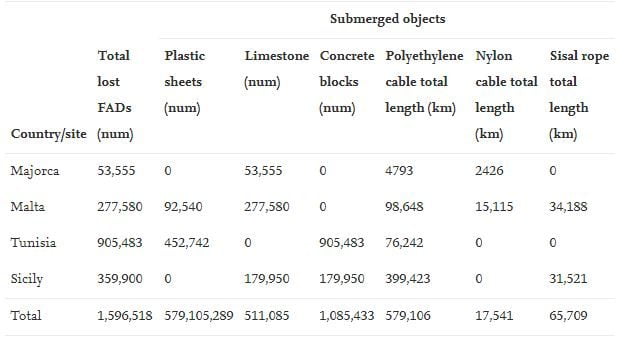
Total number of FADs abandoned per fishing area; number and characteristics of abandoned submerged objects from 1961 to 2017 in each area.
This type of fishing is usually used to catch dolphinfish (lampuki) during the autumn and winter season – ‘cannizzi”‘ in Sicily, ‘ċima’ in Malta and ‘ganatsi’ in Tunisia.
Originally, palm leaves were used to create shade with cork slabs used as floats, which were tied to large stones using vegetable fibre ropes. However, over the past decade, these have been replaced with plastic sheets, plastic bottles, polystyrene slabs and polyethylene cables. The number of these floating fishing devices and the distance from the coast also increased.
At the end of the fishing season, usually at the end of the year, most of these would have been lost or destroyed by storms, amounting to an estimated 76% of those laid out.
Considering that the intensive use of FADs started more than 40 years ago, the number lost annually is high and represents a threat to the marine environment because of the release at sea of stones, blocks, ropes and other plastic materials, the report said.
This type of fishing in the Mediterranean has not been monitored for years, the study notes, and only two recent regulations regulate the period of practice, with a ban from January to August in all the Mediterranean Sea. In Maltese waters, this type of fishing is supposed to be permitted only in specific zones.
Impact and research
Malta has the largest FAD fishing area (34,465 square kilometres), followed by Tunisia with the second largest area (23,033 square kilometres). In Sicilian waters, the FAD fishing area covers 7,402 square kilometres. Around Majorca the fishing area is smaller (1,098 square kilometres).
The research paper points out that there are no studies that look into the impact of submerged litter created by anchoring blocks, cables and plastic sheets.
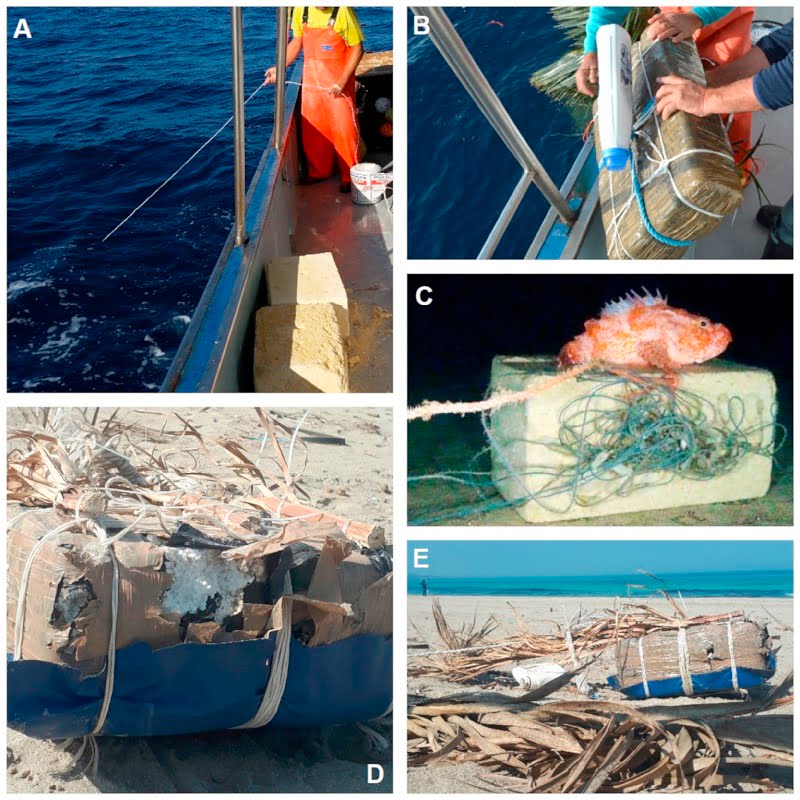
FAD components and litter: (A) polyethylene anchor cables and (B) floating structures during their deployment; (C) limestone anchor slab with synthetic ropes found in Maltese waters; (D and E) beached floating parts (polystyrene slabs, palm leaves, plastic bottles) found on the Sicilian coast.
The study, however, referred to separate individual reports where there might be a negative impact in habitat structure – and possibly its loss – and associated biodiversity due to the large number of blocks and ropes/cables.
A 2013 survey by a Remotely Operated Underwater Vehicle (ROV) in Maltese waters revealed an extended coral forest, constituted almost exclusively by the black coral “being severely impacted by the entanglement of derelict FADs”.
The floating materials might be a source of entanglement for birds, sea turtles, cetaceans and fishes and components also be ingested with possible negative consequences for fauna and indirectly for human health.
Recommendations
The report called for a “significant reduction” in the number of floating fishing devices used as “undoubtedly the first and most important strategy to mitigate the impact of these devices in the Mediterranean and in all oceans”.
It also recommended looking into tracking the devices by using buoys equipped with photovoltaic generators, GPS systems and scientific echo sounders, allowing fishermen to find their location and reduce litter.
Another solution “could be replacing the materials with sustainable ones” with high-buoyancy wood, sisal ropes and cotton sheets – materials with “costs comparable to those of materials traditionally used for drifting devices”.
It highlighted that there were still gaps regarding the use of sustainable anchor ballasts and that research was needed to identify “anchoring objects made of material able to dissolve in seawater over time”.
Finally, the recovery at the end of the fishing season “is a desirable practice started in recent years” and directly involving fishermen for the devices’ position together with campaigns for the recovery of boulders and cables accumulated on the seabed “could be useful”.
It also suggested the development of co-management plans approved by local maritime authorities to “promote the use of corridors or specific areas dedicated to such fisheries”.

